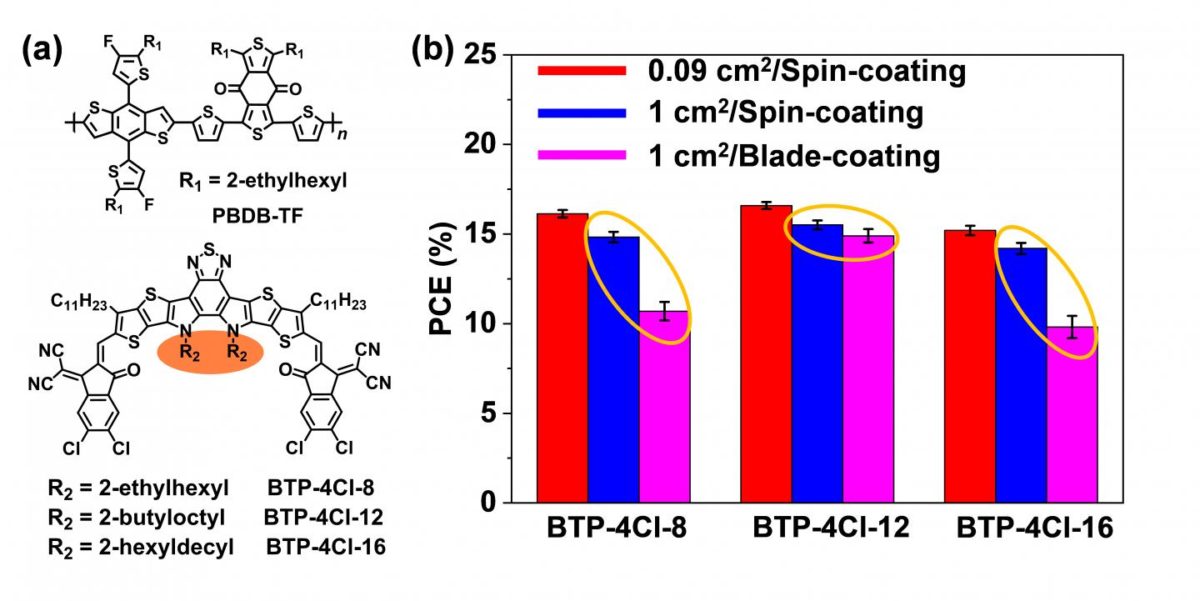Researchers at the Chinese Academy of Sciences claim to have demonstrated a conversion efficiency of 17% in an organic PV cell with a small area of 0.09 cm2.
The cell is based on a new non-fullerene electron acceptor, which is said to be a new class of the Y6 non-fullerene acceptor that is widely used in research on organic solar cells.
The scientists developed the new BTP-4Cl-12 acceptor by optimizing the alkyl chains of BTP-4Cl, which is a derivative of the well-known Y6.
By using a blade-coating method, the scientists expanded the active area of the cell to 1.0 cm2 at a later stage. The device efficiency declined by 1.5%, which the researchers claim is still a very good level.
They also described the new acceptor as having balanced solution processability and aggregation features. “The blade-coating film showed a very good phase separation morphology, which contributed to the high carrier transport and suppressed charge recombination in the OPV cells,” the research team stated.
The paper, 17% efficiency organic photovoltaic cell with superior processability, was published in the National Science Review. It notes that the new non-fullerene acceptor has a suitable solubility and thus a desirable morphology.
The scientist found that the efficiency of the demonstrated spin-coated OPV devices can also be maintained with the presented scalable blade-coating processing technology.
This content is protected by copyright and may not be reused. If you want to cooperate with us and would like to reuse some of our content, please contact: editors@pv-magazine.com.




By submitting this form you agree to pv magazine using your data for the purposes of publishing your comment.
Your personal data will only be disclosed or otherwise transmitted to third parties for the purposes of spam filtering or if this is necessary for technical maintenance of the website. Any other transfer to third parties will not take place unless this is justified on the basis of applicable data protection regulations or if pv magazine is legally obliged to do so.
You may revoke this consent at any time with effect for the future, in which case your personal data will be deleted immediately. Otherwise, your data will be deleted if pv magazine has processed your request or the purpose of data storage is fulfilled.
Further information on data privacy can be found in our Data Protection Policy.